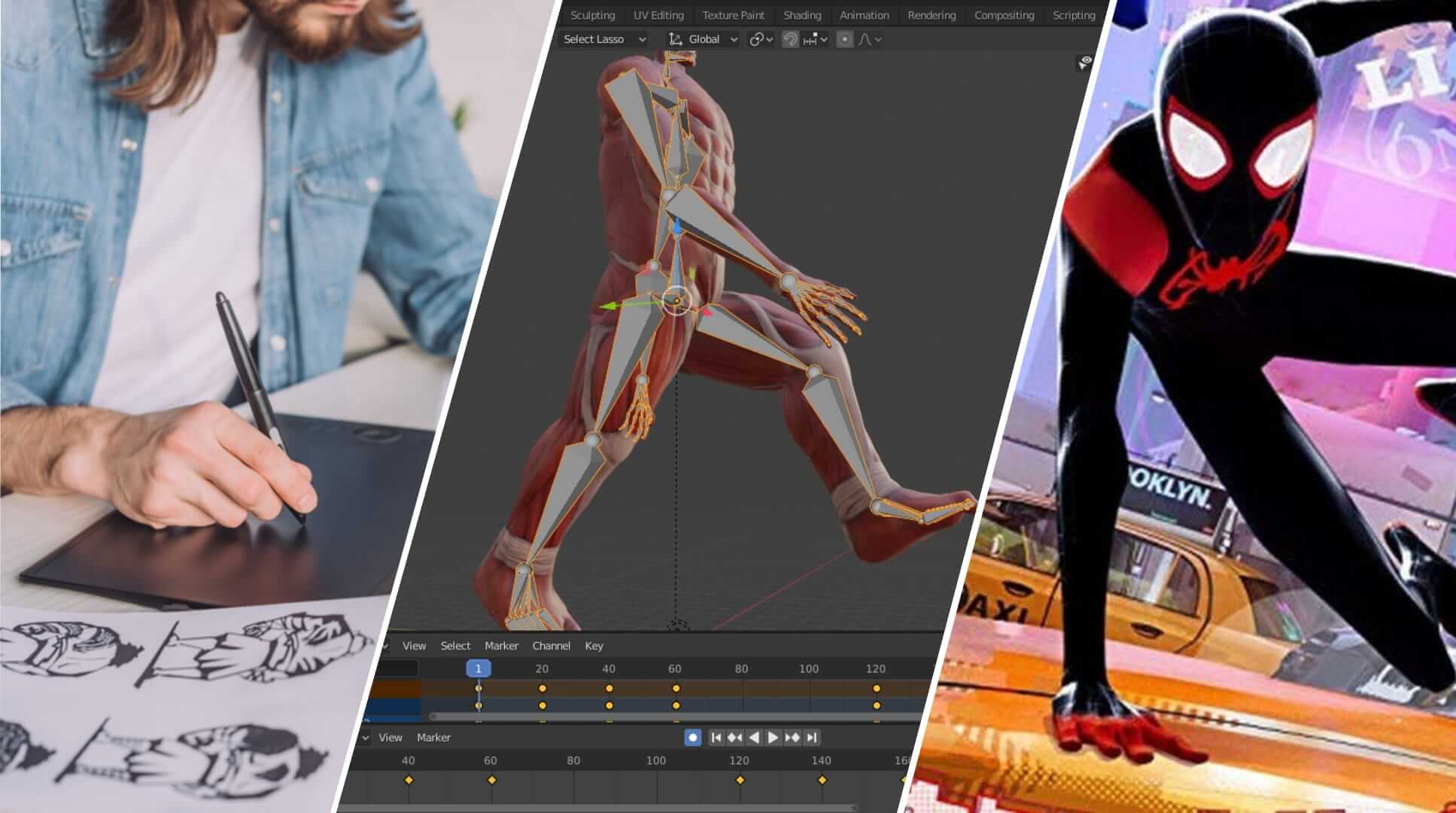What is tweening? This animation technique has undergone quite a substantial evolution over the years to its name, methods, and implementation. We’ll start out by defining tweening in animation, then we’ll look back at the origins of tweening before examining how the technique is now utilized by modern animators.
What is Tweening in Animation
First, let’s define tweening
Animation is a medium unto itself — while the end product looks and feels familiar, the process is much different. One of those steps is called tweening. Let's run through a quick tweening definition and then we'll look at some examples and the process itself.
TWEENING DEFINITION
What is tweening?
Tweening is the process of creating the inbetweens, which are the images that go between keyframes. Also known as 'inbetweeing,' the result in a smooth transition between two keyframes that depict different points in an action. Tweening is necessary to convey a sense of fluid movement with still images. Inbetweens are typically considered less imperative than keyframes. Lead artists draw keyframes while inbetweens are often handled by junior artists or assistants.
Tweening Characteristics:
- The drawings between keyframes
- Used to convey smooth motion
- Typically made by junior artists or assistants
What Does Tweening Mean
The origins of tweening
In traditional hand-drawn animation, every single frame is drawn by hand. The final result might be played back at 24 frames per second, which is known as animating on ones. Or it might be played back at 12 frames per second, known as animating on twos.
Refer to our filmmaker’s guide to frame rates for more information.
It is also not uncommon for one project to animate on both ones and two for different scenes depending on the action taking place. The following video explains shooting on ones and twos in the context of stop-motion animation.
Shooting on ones and twos • Tweening meaning
Whether utilizing 12 drawings per second or 24, it is rare for a head animator to draw every single frame themself. Instead, the process is broken up into keyframes and inbetweens. Lead animators will illustrate the keyframes, which define the look, poses, and other stylistic and practical considerations.
How to create proper inbetweens • Tweening animation
Tweening is important, but inbetweens are usually considered less vital than keyframes, which is why tweening is often handed off to junior animators or assistants. Tweening is often an entry-level job duty for many animators.
Check out our ultimate guide to film crew positions to find more entry-level filmmaking jobs.
Because the main poses and moments of a shot have already been defined in the keyframes, the inbetweens serve a mainly transitional purpose and offer less freedom and flexibility from the artist.
In Between Animation
Tweening in modern animation
Modern technology has changed a great deal about how animated projects are made today, and tweening is no exception. Many modern animated productions still utilize traditional tweening.
But the advent of digital animation software has enabled some productions to automate the tweening process.
Tweening with Adobe • How to make tweens in animate
Computers are able to carry out tweening automatically using modern animation and editing software. If you have ever set keyframes for any editing project using a software program from the Creative Cloud as an example such as Premiere, After Effects, or Animate, then you may have been making use of automated tweening without necessarily realizing it.
Between any two keyframes, a number of inbetweens are needed to carry out a smooth transition. Modern computers with editing and animation software can automate this tweening, taking a significant amount of work off of your plate. Even artificial intelligence can be used to generate inbetweens, though automation is not always perfect.
Using AI for tweening • Animation in between frames
Some animators and animation consumers contend that automated tweening is lazy or that it isn’t “real animation.” This is a debate that continues to be waged just as both traditional inbetweens continue to be drawn and automated tweens continue to be generated.
Up Next
The Best Animation Software
If you are interested in playing around with tweening or trying your hand at any type of animation, our rundown of the best animation software can help you find the perfect program for your needs and budget. We cover 2D and 3D options as well as paid and free programs, so no matter what type of animation software you are looking for, you will find a great option, up next.
Up Next: Best Animation Software →
Share your vision with elegant shot lists and storyboards.
Create robust and customizable shot lists. Upload images to make storyboards and slideshows.
